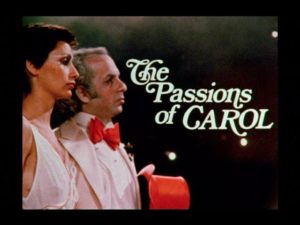It is never so difficult to speak as when we are ashamed of our silence.
According to Steven Wright
It does not matter what temperature the room is, it is always room temperature.
According to Woody Allen
Death is one of the few things that can be done as easily lying down. The difference between sex and death is that with death you can do it alone and no one is going to make fun of you.
Standing Up of the Christ Child
One of the most delightful of Christmas observances comes from the Andes of Venezuela.
In the city of Mérida a fascinating local custom is the La Paradura del Niño or The Standing Up of the Christ Child. Here the Nativity scenes in homes are particularly cherished; some are table-top size, some are room-size with all of Bethlehem portrayed in the Venezuelan context — the landscape is mountainous and divided by rivers. The figures often look like local people. On Christmas Eve the Holy Family is placed in the scene with the Wise Men nearby and moving closer daily. On New Year’s Day the tradition dictates that the baby Jesus must be moved to an upright position and stay there until Candelaria (February 2). If a friend or neighbour sees this is not done the baby may be kidnapped and the family who neglected their duty must hold a parandura party for the kidnappers and friends.
This consists of choosing godparents for the Niño — they will not only bring home the baby in a basket or handkerchief but arrange for the musicians, candles, fireworks, and refreshments. The procession consists of first of fireworks boys, followed by the musicians who will be mute until the baby is found, a pair of teens as Mary and Joseph, children as shepherds singing a carol about searching for the baby and, lastly, the godparents. When the candle-lit procession gets to the house where the baby is stored, it is handed over to the kerchief and its god-parents and the joyous music breaks out. All march home joyfully where the party awaits after the baby is replaced standing up. Little kids may offer a poem of welcome, women will say the rosary and then all eat, dance and drink until dawn.
According to Thomas Carlyle
If Jesus Christ were to come today, people would not crucify him. They would ask him to dinner, hear what he had to say, and make fun of it.
Nuts
A symbol of fruitfulness long associated with midwinter festivals. During the early Roman empire the poet Marcus Valerius Martialis sent a present of them to a fellow-writer saying, “From my small garden, behold, eloquent Juvenal, I send you Saturnalian nuts. The rest of the fruit the rakish Garden God has bestowed on frolicking girls.” Romans believed each type of nut to be possessed of a special virtue: almonds were an antidote to drunkenness; walnuts counteracted poisons; hazelnuts prevented famine.
Christmas-time in many countries sees bowls of nuts on the table and nuts used in desserts. They are an indispensable part of the Thriteen Desserts of Provence; St Nicholas and his helpers throw them to children or put them with apples in their shoes. Boys and girls throw walnuts at each other in Poland on St Stephen’s Day and in other parts of eastern Europe nuts are thrown into corners of the house for good luck. Walnuts are a necessary component to the Bulgarian Christmas meal. Each member of the family cracks one in order to determine their fate for the next year. If the walnut is a good one, it is said that the year will be successful. Bad luck is predicted for the person who cracks a bad walnut. North American crooners sing of “Chestnuts roasting on an open fire..” and nuts have long been used as edible decorations on Christmas trees.
According to PJ O’Rourke
Always read stuff that will make you look good if you die in the middle of it.
According to Cicero
No sane man will dance.
The Passions of Carol
Not everything to do with Christmas is edifying or spiritually uplifting. Sometimes bad people try to cash in on the holiday for mercenary or subversive purposes. The results often are not pretty. Consider, for example:
There have been many variations on Charles Dickens’s A Christmas Carol: it has been set in London, in the American Midwest, in black ghettoes and modern television studios; Scrooge has been played by men, women, Muppets, puppets, and cartoon ducks. Few versions, however, have stretched the genre as much as The Passions of Carol, a 1975 pornographic movie starring Merrie Holiday. Directed by Warren Evans, the movie examines the change of heart which Christmas brings to Carol Screwge, a cruel editor of a skin magazine.
According to TS Eliot
Some editors are failed writers, but then, so are most writers.


